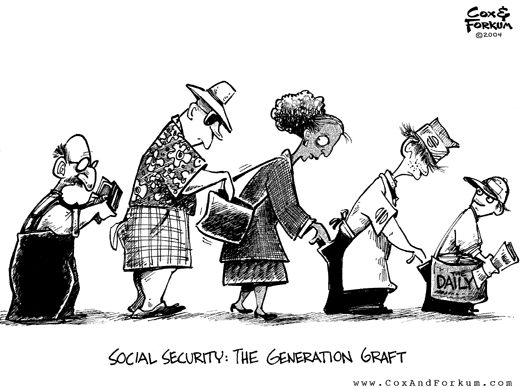|
|
|||||||||||||||||||||||||||||||
|
More Retirements than New Hires in Canada in 2006
OTTAWA - Canada is close to having more people approaching retirement than reaching working age. There are already barely enough people young people entering the job market to replace those retiring as a result of the aging of the population, Statistics Canada says in its latest report on the 2006 census, a breakdown of the age and sex of the population. “Population projections show that in about 10 years, Canada may have more people at the age where they can leave the labour force than at the age where they can begin working,” it said. In 2006 there was just over one person entering the job market for each person leaving it, down from 1.4 at the time of the previous census in 2001, and 2.3 in the 1970s. “Canada has never had so many people close to retirement,” it said. That presents challenges for employers and for society as a whole, it added. While the report doesn’t state what those challenges are, they include worker shortages, rising health care costs and increasing demands on private pension systems. However, Statistics Canada demographer Laurent Martel noted in an interview that an older population presents opportunities to society as well as challenges, including increases in volunteering, and possibly the creation of stronger ties between generations.
The elderly have more time than the working age population to do volunteer work and research suggests they do, Martel said. “We know that they are doing a lot of volunteering,” he said. “Older persons also are usually the ones who are most keen on keeping the links between generations, through their children and their grandchildren.” The aging of the population reflects the combination of a low fertility rate and increasing life expectancy, the report said. The fertility rate at about 1.5 children per woman has been below the population replacement level of 2.1 since the early ’70s, it noted. As a result, the proportion of children aged 14 and under accounted for a record low 17.7 per cent of Canada’s population, down from 19.1 per cent in 2001, and about 33 per cent in 1961, at the height of the post-war baby boom. Meanwhile, the life expectancy of Canadians, which increased appreciably over the past century, is now 82.5 years for women and 77.7 years for men, resulting in more reaching age 65 and living longer after, it said. One in seven Canadians, or more than four million, are now elderly. And the growth of the elderly population will accelerate in 2011 when the first of the baby boomers reach 65, resulting in seniors in Canada outnumbering children within 10 years, it said.
While immigration has had a big impact on the growth of the population, the analysis said it has done little to stop the aging of the population. Yet Canada has the second-youngest population among the Group of Eight major industrial countries, with only the U.S. having a smaller proportion of elderly, the main criteria used in the analysis to determine whether one population is older than another. That Canada’s population is younger than that of most other industrial countries reflects the fact that the baby boom effect was larger and more sustained here, Martel said. That also explains why that the aging of Canada’s population will accelerate with the retirement of that large generation, he added. “So the baby boom generation slowed the aging process but is also about to accelerate it,” he said. But Canada is already aging no matter how it’s measured. The median age of Canadians - where as many are older as younger - has also risen steadily since 1966 to what was 39.5 years in 2006, up from 37.6 in 2001, the third largest census increase in the past 50 years. And the average age of Canada’s seniors is also rising. The proportion of very elderly - aged 80 and over - increased by 25 per cent between 2001 and 2006, second only to the rate of growth of those aged 55 to 64, and surpassed the one-million mark. Two thirds of the very elderly were women whose life expectancy at 82.5 years exceeds that of men at 77.7. The proportion of centenarians also rose by a relatively steep 22 per cent over that five-year period to 4,635 people 100 years of age or older.
Within Canada, the population of all provinces and territories aged with the proportion of people over 65 increasing and the percentage under 14 continuing to decline in each. But there were regional variations in the age of the population, with the populations of provinces in the East generally being older than those in the West, especially Alberta which has the lowest percentage of elderly at 10.7. Saskatchewan is an anomaly in that it has the greatest proportion of seniors, at 15.4 per cent, but also one of the highest proportions of children, along with Manitoba and Alberta, which are all above 19 per cent, compared with less than 17 per cent in most other provinces. The high proportion of young people in the Prairie provinces reflects in part the high fertility rates of their aboriginal populations. All Atlantic provinces had a greater than average proportion of seniors, with Nova Scotia being the oldest with 15.1 per cent of its population being aged 65 or over, which the report noted is in contrast to 50 years ago when the four provinces were among the youngest. Among provinces, Nova Scotia also has the oldest median age at 41.8 and Alberta the youngest at 36. British Columbia’s population also remains one of the oldest, with 14.6 per cent being seniors, a reflection of its higher life expectancy. Quebec’s seniors accounted for 14.3 per cent of that province’s population, Manitoba’s 14.1 and Ontario’s just 13.6.
The region encompassing the three territories had the youngest population, with only one in 20 being 65 or older, which the report said is due to the high fertility rate, particularly among the Inuit, and lower life expectancy. The proportion of elderly also rose in all of Canada’s 33 largest cities, while the proportion of children declined. The oldest city in Canada was Kelowna, B.C., with 19 per cent of its population being elderly, while Calgary had the fewest elderly at just 9.4 per cent. “Over the last 10 years, Calgary and Edmonton have enjoyed an economic boom that has attracted workers from other parts of Canada,” Statistics Canada said, speculating that has likely dampened the increase in proportion of elderly in that province’s two major cities. Alberta, meanwhile, was the only province to have more men than women, but just barely at 100.2 men for every 100 women, while nationally there were just 95.9 men for every 100 women. While it didn’t say so, Alberta’s higher proportion of men also likely reflects the flood of workers into that province’s oil patch. The regional and local differences in the ages of the population are “huge” and reveal that the demands for services will vary from province to province and community to community, Martel said. “In Kelowna you have a much older population, so you will have different needs for policy makers to meet than in Calgary, where the number of senior citizens is far less and the number of working age people is way higher.”
|
|
||||||||||||||||||||||||||||||
|
Website Design + SEO by designSEO.ca ~ Owned + Edited by Suzanne MacNevin | |||||||||||||||||||||||||||||||




